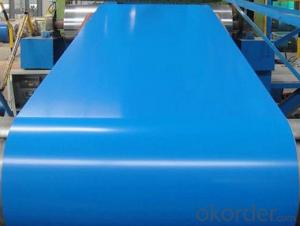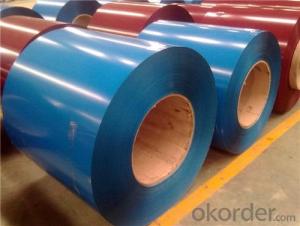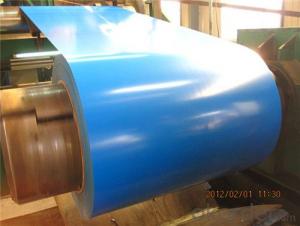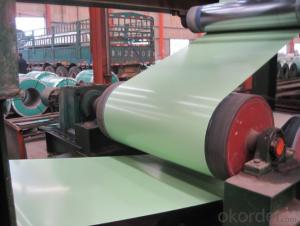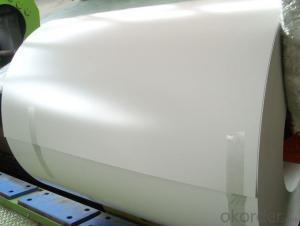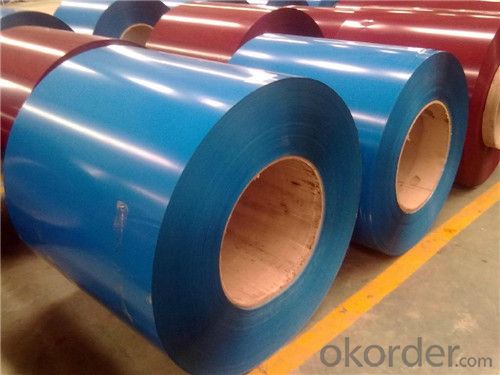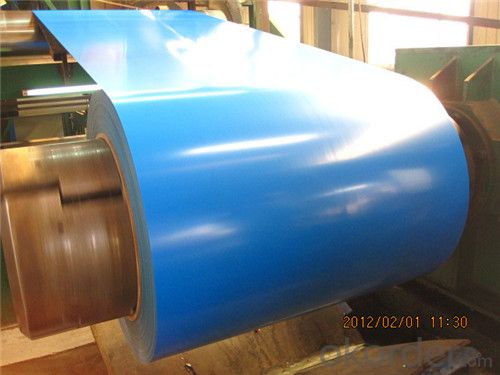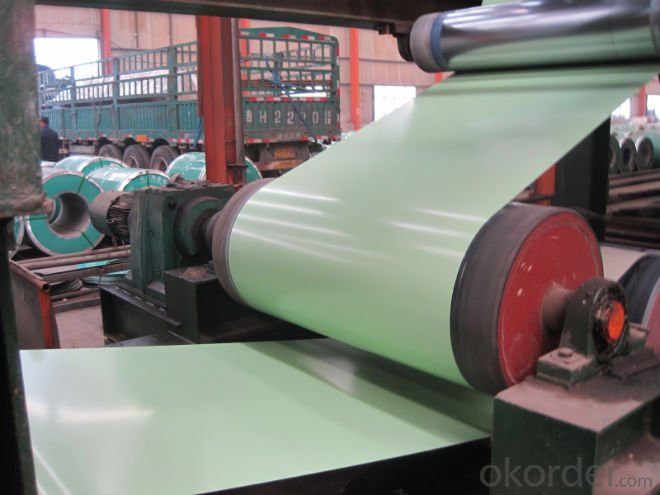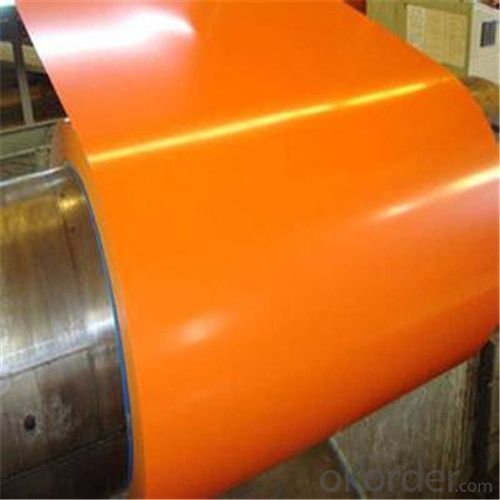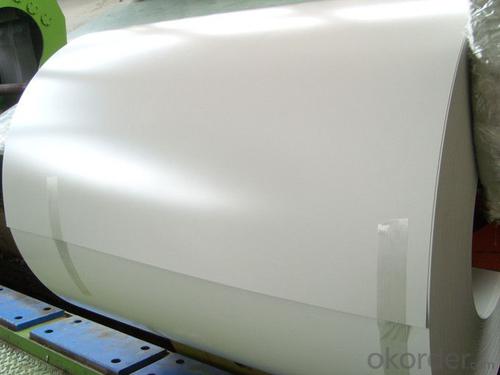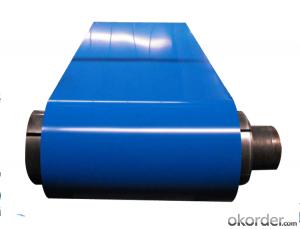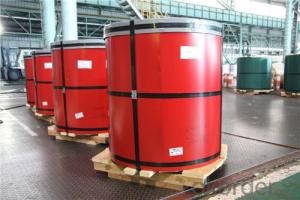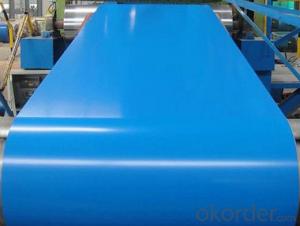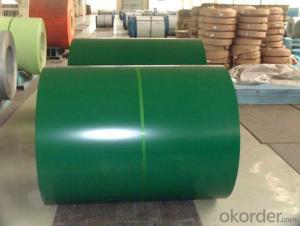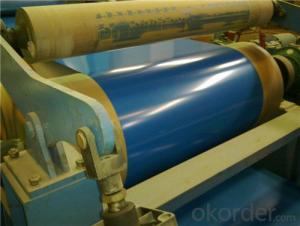ASTM Z60 Rolled Prepainted Steel Coil for Construction
- Loading Port:
- Shanghai
- Payment Terms:
- TT OR LC
- Min Order Qty:
- 50 m.t.
- Supply Capability:
- 30000 m.t./month
OKorder Service Pledge
OKorder Financial Service
You Might Also Like
Structure of ASTM Z60 Rolled Prepainted Steel Coil for Construction
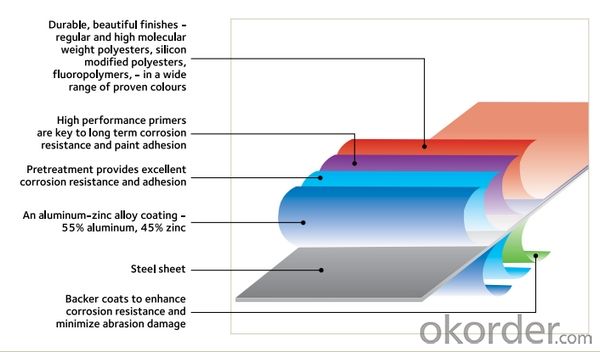
Description of ASTM Z60 Rolled Prepainted Steel Coil for Construction
BMT Prepainted Rolled Steel Coil is a kind of coated steel coil/sheet. With the cold rolled steel of different strength and thickness as substrate, it is produced through applying Zn coating on both faces by hot dip process. Its surface has bright silver color and regular embossed-like figure, which are highly decorative.
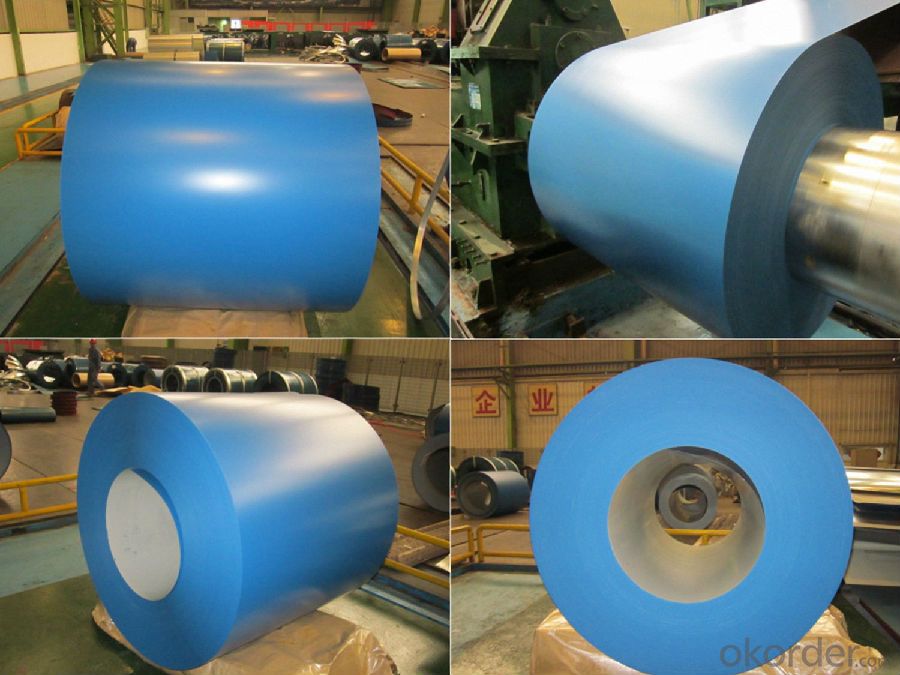
Main Feature of ASTM Z60 Rolled Prepainted Steel Coil for Construction
1.Corrosion resistance: It mainly depends on the aluminum protection. When the zinc being worn, the aluminum will form a dense layer of aluminum oxide, resist corrosion material to prevent further corrosion inside.
2. Heat reflective: Galvanized steel plate heat-reflective high rate is twice as galvanized steel, often used to make insulation materials.
3. Economy: Because density of 55% AL-Zn is smaller than the density of Zn, so in the same weight and thickness of Galvanized zinc layer, aluminum-zinc steel plate is larger area more than 3% of galvanized steel sheet.
Applications of ASTM Z60 Rolled Prepainted Steel Coil for Construction
1. Construction and building: roofing; ventilating duct; handrail; partition panel
2. Electric appliance: refrigerator; washing machine; refrigerator..
3. Transportation: oil tank; road sign; etc.
4. Agriculture:barn; etc.
5. Others: vending machine; game machine; etc.
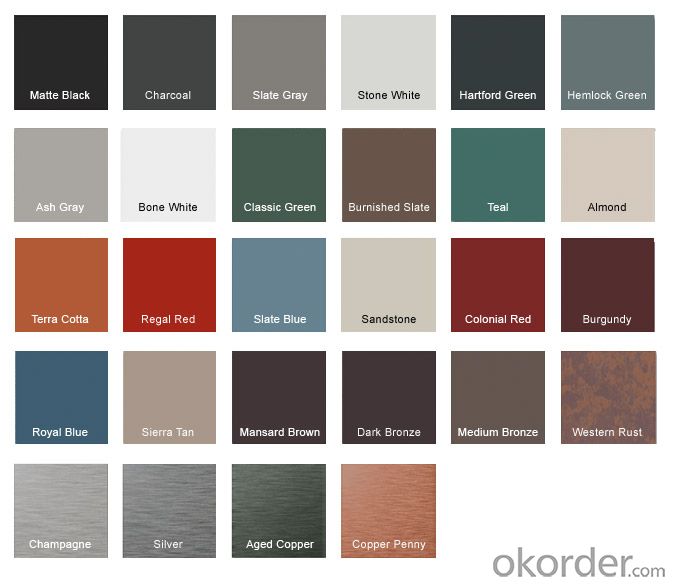
Specifications of ASTM Z60 Rolled Prepainted Steel Coil for Construction
Product | ASTM Z60 Rolled Prepainted Steel Coil for Construction |
Material Grade | SGCC / SGCH / DX51D+AZ, etc |
Thickness | 0.3-3.5mm |
Width | 600-1250mm |
Tolerance | Thickness: +/-0.02mm , Width:+/-2mm |
Zinc-coating | AZ35-80g/m2 |
Technique | Raw material: Hot rolled steel coil > Cold rolled>hot dipped galvalume |
Surface | Coated, prepainted galvanized/galvalume/ hot dopped galvanized steel |
Spangle | Regular spangle , small spangle, zero spangle |
ID | 508MM 610MM |
Coil weight | 25MT max |
Export package | Cardboard inner sleeves, Waterproof paper, galvanized steel covered and steel strip packed |
FAQ of Z60 Rolled Prepainted Steel Coil for Construction
We have organized several common questions for our clients,may help you sincerely:
1. What is your MOQ ?
Our MOQ is 50mt. And there is more discount if you order like 1000 tons and more. The more appropriate payment term your can offer, the better price we can provide.
2. How do you promise the quality of the steels?
We have established the international advanced quality management system ,every link from raw material to final product we have strict quality test;We resolutely put an end to unqualified products flowing into the market. At the same time, we will provide necessary follow-up service assurance.
3. What is the substrate for steel tiles?
Hot dipped galvanized or gavalume, pre-painted galvanized.
4. What is your package?
One coil per bundle, inner is the protecting humidity-proof wax paper. Medium is plastic film. Outer is sackcloth or compound paper packing. Coil to be laid on single type pallet (one pile per pallet)
- Q: All the steel straps that secure my deck and stair 6x6 posts to the concrete piers have some rust on them. Had bought a rust reducer to spray on them and repaint. As I went to do this I found that one of them is on its last legs, with the steel rusted through and bubbling up all up the sides of the straps. Since this is the end post on a row of 3 deck support posts, I was thinking of removing as much rust as possible, then paint with Rustoleum and cover lower post with something to keep water away from post and pier in the future? Was thinking of something removeable so I could check on it for further rusting. What do you folks with building experience think of this? Thanks.
- Sorry troll, doctors don't give a tetanus shot just because you came into contact with rusty metal. The belief that you need a tetanus shot for stepping on a rusty nail is not quite accurate -- it's not the rust that prompts the shot, it's the fact that the nail was on the ground and dirty.
- Q: What are the common surface defects found in steel coils?
- There are several common surface defects that can be found in steel coils. One of the most common defects is rust or corrosion. This occurs when moisture comes into contact with the steel surface, causing it to oxidize and form rust. Another common defect is scratches or abrasions, which can occur during the handling or transportation of the coils. These can range from minor surface scratches to deeper gouges that can affect the structural integrity of the steel. In addition, there can be surface roughness or unevenness, which can be caused by improper rolling or cooling processes during manufacturing. This can result in an inconsistent surface texture that may impact the appearance and performance of the steel. Another defect is scale, which is a layer of oxide that forms on the surface of the steel during the manufacturing process. This can give the steel a rough and uneven appearance. Finally, there can be oil or grease stains on the surface of the steel, which can occur during the manufacturing or handling process. These stains can affect the adhesion of paints or coatings applied to the steel. Overall, these common surface defects in steel coils can impact the quality, appearance, and performance of the steel, and may require remedial actions such as cleaning, grinding, or recoating to resolve.
- Q: How can the outer diameter and weight of steel coil be converted?
- When it comes to this question, in fact, a lot of them are irrelevant. The weight of the steel rolls means that there is a unit weight called the weight of each mm in the width of the steel coil
- Q: What are the different types of steel finishes available for coils?
- There are several types of steel finishes available for coils, including hot-dip galvanized, galvannealed, electro-galvanized, and painted finishes.
- Q: What are the different types of steel coil coating materials?
- There are several different types of steel coil coating materials that are used in various industries and applications. Some of the most common types include: 1. Polyester: Polyester coil coating materials are known for their durability and resistance to weathering. They are often used in outdoor applications such as roofing and cladding, where they provide excellent protection against fading, chalking, and corrosion. 2. Polyvinylidene Fluoride (PVDF): PVDF coil coating materials are highly resistant to chemicals, UV radiation, and weathering. They are commonly used in architectural applications, where they provide long-lasting color retention and excellent protection against harsh environmental conditions. 3. Polyurethane: Polyurethane coil coating materials offer a high level of flexibility and adhesion, making them ideal for applications that require resistance to abrasion, impact, and bending. They are commonly used in the automotive and appliance industries. 4. Epoxy: Epoxy coil coating materials are known for their excellent adhesion and corrosion resistance. They are often used in industrial applications such as metal furniture, storage tanks, and machinery, where they provide long-lasting protection against chemicals and abrasion. 5. Silicone Modified Polyester (SMP): SMP coil coating materials combine the durability of polyester with the flexibility of silicone. They are commonly used in agricultural and industrial applications, where they provide excellent resistance to chipping, cracking, and peeling. These are just a few examples of the different types of steel coil coating materials available in the market. The choice of coating material depends on the specific requirements of the application, such as durability, weather resistance, chemical resistance, and aesthetics.
- Q: How are steel coils used in the manufacturing of braking systems?
- Steel coils are used in the manufacturing of braking systems to create brake pads and other components that require heat resistance and durability. The steel coils are shaped and processed to form brake pads, which provide friction against the rotor to slow down or stop the vehicle. Additionally, steel coils are also used in the production of brake calipers, rotors, and other parts that ensure efficient and reliable braking performance.
- Q: Okay, I have looked all ovcer the net and it says diamonds are stronger, but why? I mean, why is diamonds used for the top equiptment rather than steel?
- Because diamonds are denser but a lot more brittle they would break if used the same as most steel also they are vary rare so useing them in mass production would be redecliously expencive.
- Q: y does 1095 steel on a katana weight about a pound less for the same amount than 1045? the 1095 is better right? but then why is 1045 steel more comenly used for practical use than 1095, even though i no its cheaper to use 1045 for tami mats. so is 1095 steel the better investment for buying and minor tami mat use?
- 1045 is a medium carbon steel is used when greater strength and hardness is desired than in the as rolled condition. Extreme size accuracy, straightness and concentricity combine to minimize wear in high speed applications. 1095 is a high carbon steel, but does not hold as sharp an edge. 1095 high carbon steel is harder and more durable than 440C stainless steel, but will rust much more easily. Stainless steel is more brittle than both 5160 and 1095 carbon steel, but is still very useful due to its resistance to rust and corrosion.
- Q: I'm analysing horse stirrups and would like to know the disadvantages to stainless steel? - thanks
- Stainless Steel has more advantages than disadvantages. But u asked for disadvantages so they r as follows i've given common disadvantages more can be found on Google. Disadvantages of Stainless Steel: Stainless steel tends to scratch and dent. Food, grease and fingerprints show very clearly on stainless steel, making frequent wiping and cleaning a necessity. High initial cost Difficult to fabricate, or in other words, it is not as malleable as other metals, say iron, and hence if not fabricated properly, results in costly re-work. Difficult to weld High cost of polishing etc. i.e. adding finishing touches for the market. there are advantages more than disadvantages. But u asked for disadvantages that's why i have given only disadvantages of stainless steel Hope what u want u got.
- Q: I'm searching for the elastic modulus of ASTM A653 galvanized steel sheet. Max points for first person with a response that includes web address of reliable reference - I just haven't found it yet. thanks!
- I've okorder /
Send your message to us
ASTM Z60 Rolled Prepainted Steel Coil for Construction
- Loading Port:
- Shanghai
- Payment Terms:
- TT OR LC
- Min Order Qty:
- 50 m.t.
- Supply Capability:
- 30000 m.t./month
OKorder Service Pledge
OKorder Financial Service
Similar products
Hot products
Hot Searches
Related keywords
